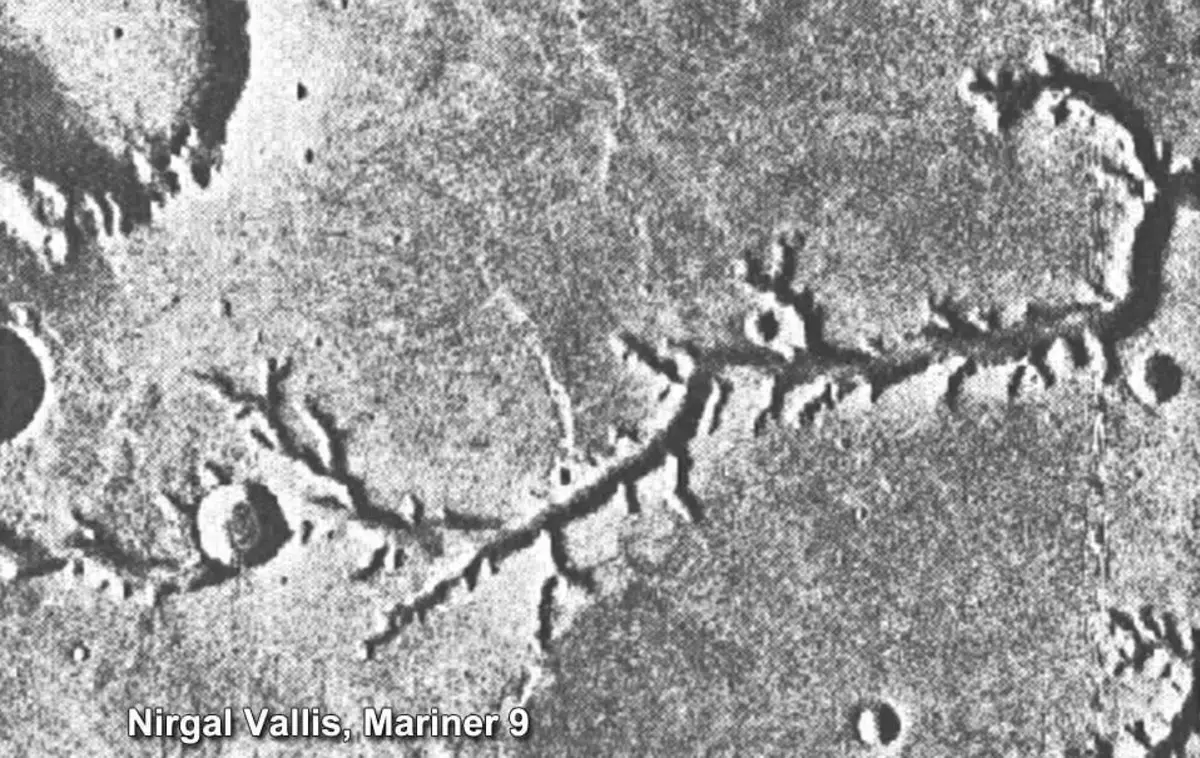A US planetary scientist has discovered how long water valley networks have been forming on Mars with the help of impact craters, and even discovered that rivers on the surface of Mars flowed regularly, but not early on. The scientist’s discovery will not only change the perception of the Martian landscape, but also reveal some secrets about the climate history of the Red Planet.
Today, Mars is a desolate world almost defenseless against cosmic rays. Although 95 percent of the atmosphere here consists of carbon dioxide, it is very rare and cannot retain heat for a long time despite its greenhouse gas content. That is why the Red Planet is cold: the average temperature is minus 63 degrees Celsius (minimum up to minus 125), but in the summer afternoon it can rise to plus 25 or even plus 30 near the equator.
Mars wasn’t always a “hostile” place. The planet had a dense atmosphere and the climate was humid and hot, with rain falling and rivers flowing on the surface. Researchers believe that the Red Planet lost its “paradise beauty” about three billion years ago. Then an event occurred there due to the disappearance of the magnetic field, the main part of the atmosphere went somewhere: either it was carried away by the solar wind, or it was bound by the earth, and the water turned into underground ice. Thus, Earth’s neighbor became the cold, dry world that scientists observe today.
How do we know rivers flow on Mars? Water signatures found by rovers and orbital stations. One piece of evidence is valley networks. They are large channel systems ranging from hundreds of meters to 20 kilometers in width and hundreds of meters in depth. Researchers believe these networks formed due to surface runoff resulting from large lake spills and river activity.
According to some experts, such channel systems were formed more than three billion years ago, at the end of the Noian, at the beginning of the Hesperian period. However, the total time required for the formation of these objects is not known precisely. Most attempts to determine this time were based on the intermittency coefficient, which can be used to study “living” Earth rivers, but not “dead” Martian rivers. In previous studies, experts suggested that erosion processes caused by surface water flows have been occurring for tens of thousands of years in areas where channels are located.
American planetary scientist Alexander Morgan tried to find out exactly how long it took for the Martian valley networks to form (alexander morgan) from the Institute of Planetology (USA). In his study published in the journal Earth and Planetary Science LettersThese valleys probably formed not quickly, over tens of thousands of years, but very slowly over hundreds of millions of years, the scientist said. Moreover, their formation was accompanied by long dry periods. So rivers flowed, then at some point their channels dried up and then filled again. Exactly how many such “loops” there are is still a mystery.
Morgan used impact craters in eight regions of Mars totaling 10,000 square kilometers in area as dating tools. The scientist discovered and determined the age of the populations of impact craters that appeared before and after the formation of the valley network. This allowed the planetary scientist to obtain the maximum time period for the formation of river channels.
In the article, the American scientist noted that the “lifespan” of Martian rivers may be relatively short: they flowed for only 0.001 percent of the existence of the valley network. So, in general, rivers on Mars were constantly drying up, but they could “wake up” again due to volcanic activity, melting snow or a change in the tilt of the Red Planet’s rotation axis and orbit. Such climatic fluctuations also occur on Earth; these are called Milankovitch cycles. They explain the natural climate changes that occur on our planet and are the cause of periodic glaciations.
As for the slow rate of valley formation, the scientist believes that this is due to the accumulation of large rocks in river beds, which slows down erosion. Morgan concluded that if Martian river valleys truly formed over hundreds of millions of years, conditions suitable for the origin of life existed there for much longer. So longer than previously thought. Life is more likely to emerge and develop in an environment where liquid water is present for long enough.













